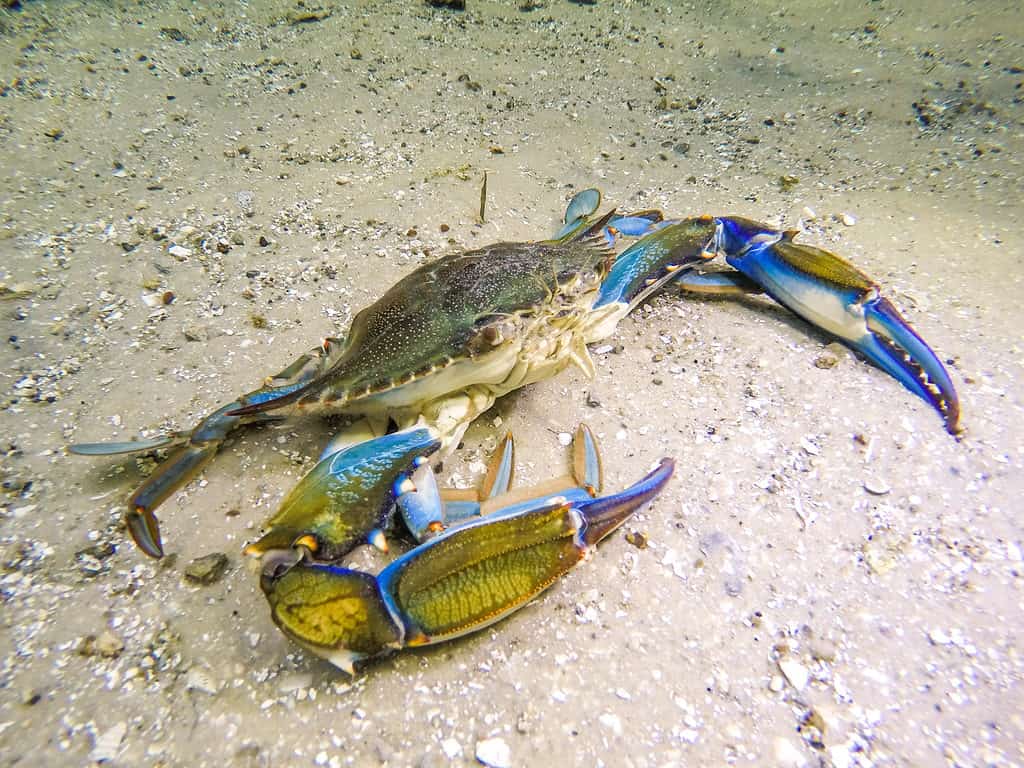Despite its small size, Maryland boasts an incredible amount of coastline. According to the NOAA, the state features 3,190 miles of coastline, or roughly 3.4% of the total coastline of the United States. Most of the state’s coastline lies along the Chesapeake Bay. Every year, thousands of ships travel up and down the bay on their way to or from the Port of Baltimore or one of the hundreds of recreational docks or marinas.
These boats rely on lighthouses to help them navigate the waters of the bay and its various channels. Since the late 18th century, nearly 74 lighthouses have lined the shores of Chesapeake Bay. Over 30 of these lighthouses still stand to this day, many of which continue to guide ships through the bay. That said, what is the tallest lighthouse in Maryland?
In this article, you’ll discover the tallest lighthouse in Maryland. We’ll also discuss the size, location, and history of the light, as well as the wildlife you can find around it.

Most of the Maryland’s coastline lies along the Chesapeake Bay.
©Nicole Glass Photography/Shutterstock.com
Size of the Craighill Channel Lower Range Rear Light
The tallest lighthouse in Maryland is the Craighill Channel Lower Range Rear Light at 105 feet tall. At that height, it also ranks as the 46th-tallest lighthouse in the United States. The light has a total range of 16 nautical miles or roughly 18 land miles.
Description of the Craighill Channel Lower Range Rear Light
The Craighill Channel Lower Range Rear Light consists of an iron skeleton pyramidal tower and a wooden square central shaft. Corrugated metal sheets encase the central shaft, which encloses a stairway that leads to a double-decked lantern. The base of the tower and shaft are painted white, while the top half appears red, aside from the gray lantern. It uses a fixed, white, fourth-order Fresnel lens, a lens commonly used in bays, rivers, and small-to-medium-sized waterways in the United States. The light rests on 9 granite piers, the four corners of which connect to the iron skeleton that supports the inner central tower.
Prior to 1938, the light housed a one and a half story keeper’s dwelling. Located at the base of the tower, the dwelling consisted of a mansard roof, 16 windows (4 on each side), and a south-facing door. The mansard roof also featured 2 gable-roofed dormer windows. Wooden siding covered the building, and a wood balustrade surrounded it on all sides. Shortly after the light was automated, the dwelling was removed.
Location of the Craighill Channel Lower Range Rear Light
You can find the Craighill Channel Lower Range Rear light on the western shore of Chesapeake Bay at its northern end near Edgemere. It rests in 2 to 3 feet of water near the northern end of the entrance to the Patapsco River. Nearby landmarks include Pleasure Island to the north, Hart Island to the northeast, and North Point State Park to the west. The light serves as one of a pair of range lights tasked with marking the first section of the channel that leads to Baltimore Harbor.
History of the Craighill Channel Lower Range Rear Light
By the mid-19th century, Baltimore’s growth and importance as a shipping and trade hub had led to calls to enlarge the channel leading into Baltimore Harbor. In 1870, Congress approved $50,000 in spending to enlarge the channel. William Craighill, a lighthouse board member, supervised the surveys for the excavations of the channel. As part of this project, it was also determined that range lights were needed to shepherd boats into the channel at night safely. The range lights needed for the project were named after Craighill in honor of his efforts.
Initially, the project planned to use screw-pile lighthouses. However, this idea was eventually scrapped due to the threat posed by ice on the bay in the winter. This led to the current design of the lighthouse with a pyramidal iron skeleton over a central shaft. This type of design is unusual even today in the Chesapeake Bay. Typically, this sort of design is more commonly found in areas with soft sand or coral. Places where you can find this type of lighthouse include Virginia, Delaware, and New Jersey.
Although the tallest lighthouse in Maryland was first lit in 1873, delays and additional expenses meant that it was not permanently lit until 1875. The light continues to use much of its original material, although several alterations have been made over the last few decades. This included automating the light in 1923 and the removal of the keeper’s dwelling in 1938.
What Do Range Lights Do?
Also known as leading lights, range lights are used to help ships navigate in shallow or dangerous channels. Range lights operate in pairs and consist of one front light and one rear light. When used together, they form leading lines that ships can follow at night. The lights are set up in such a way that – when aligned – they provide a bearing that ships can use to approximate their position in the dark.
Can I Visit the Craighill Channel Lower Range Rear Light?
Given its status as the tallest lighthouse in Maryland, many people wonder if you can visit this towering masterpiece. However, you cannot visit the Craighill Channel Lower Range Rear Light. The lighthouse is closed to the public and only accessible by boat. The United States Coast Guard District 5 owns the lighthouse and is responsible for its upkeep and operation. While you cannot visit the lighthouse, you can easily view it from Ramona Beach in Edgemere.
Wildlife Around the Craighill Channel Lower Range Rear Light

Blue crabs are a common sight around the Craighill Channel Lower Range Rear Light.
©Jen Helton/Shutterstock.com
The Chesapeake Bay is the largest estuary in the United States and, as such, is home to thousands of animal and plant species. On the shores of the estuary, you can find various animals, including raccoons, porcupines, opossums, skunks, and foxes.
Meanwhile, the waters of the bay teem with all manner of aquatic organisms. Some of the animals you can find in the waters around the lighthouse include blue crabs, striped bass, mussels, barnacles, and zooplankton. Other fish species you can find include:
- Red drum
- Black drum
- Kingfish
- Flounder
- Speckled trout
- American eel
- American shad
Where is Craighill Channel Located on a Map?
In Maryland, USA, the Craighill Channel Lower Range Front Light holds the distinction of being the first caisson lighthouse ever constructed in the Chesapeake Bay. The lighthouse is named after William Price Craighill.
The photo featured at the top of this post is © Malachi Jacobs/Shutterstock.com
Thank you for reading! Have some feedback for us? Contact the AZ Animals editorial team.






